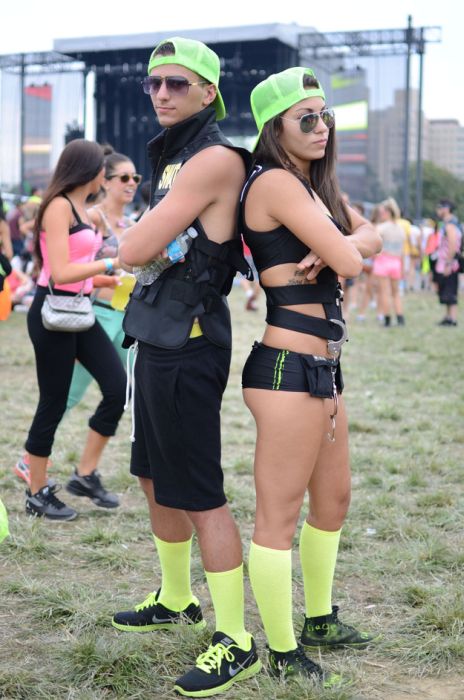Rave Music Fan Girl
|
Sections 63, 64 & 65 of the Act targeted electronic dance music played at raves. The Criminal Justice and Public Order Act empowered police to stop a rave in the open air when a hundred or more people are attending, or where two or more are making preparations for a rave. Section 65 allows any uniformed constable who believes a person is on their way to a rave within a five-mile radius to stop them and direct them away from the area; non-compliant citizens may be subject to a maximum fine not exceeding level 3 on the standard scale (£1000). The Act was officially introduced because of the noise and disruption caused by all night parties to nearby residents, and to protect the countryside. However, it has also been claimed that it was introduced to kill a popular youth movement that was taking many drinkers out of town centres, where they would drink taxable alcohol, and into fields to take untaxed recreational drugs.. In November 1994, the Zippies staged an act of electronic civil disobedience to protest against the CJB.
After 1993, the main outlet for raves in the UK were a number of licensed venues, amongst them Helter Skelter, Life at Bowlers (Trafford Park, Manchester), The Edge (formerly the Eclipse (Coventry)), The Sanctuary (Milton Keynes) and Club Kinetic.. In London, itself, there were a few large clubs that staged raves on a regular basis, most notably "The Laser Dome", "The Fridge", "The Hippodrome", "Club U.K.", and "Trade." "The Laser Dome" featured two separate dance areas, "Hardcore" and "Garage", as well as over 20 video game machines, a silent-movie screening lounge, replicas of the "Statue of Liberty", "San Francisco Bridge", and a large glass maze. At capacity "The Laser Dome" held in excess of 6,000 people. Events proved to be one of the main forces in rave, holding legendary events across the north-east and Scotland. Initially playing Techno, Breakbeat, Rave and drum and bass, it later embraced hardcore techno including happy hardcore and bouncy techno. Judgement Day, History of Dance, and now REGENeration continued the Rezerection legacy. Scotland's clubs, such as the FUBAR in Stirling, Hangar 13 in Ayr, and Nosebleed in Rosyth played important roles in the development of these dance music styles.
These were nearly all pay-to-enter events; however, it could be argued that rave organisers saw the writing on the wall and moved towards more organised and "legitimate" venues, enabling a continuation of large-scale indoor raves well into the mid-nineties. One might remember that the earliest house and acid house clubs were themselves effectively "nightclubs". Public perception of raves was also overshadowed in the press by the 1995 death of Leah Betts, a teenager who died after taking ecstasy; journalists and billboard campaigns focussed on drug use, despite Betts cause of death being water intoxication in her home, not an ecstasy overdose at a rave.
Genuine illegal raves have continued throughout the UK to this day and unlicensed parties have been organised in venues including disused quarries, warehouses, and condemned night clubs. The rise of the Internet has both helped and hindered the cause, with much wider and more accessible communication resulting in bigger parties, but consequently increasing the risk of police involvement.
|
|









